To prevent flood disaster in Uttarakhand, the state govt must remove illegal bridge on Yamuna
The illegal bridge built across the Yamuna river in Dehradun could lead to a flood disaster, claim local people. Also, the deep mining pits in the riverbed are bound to alter the river course during floods.
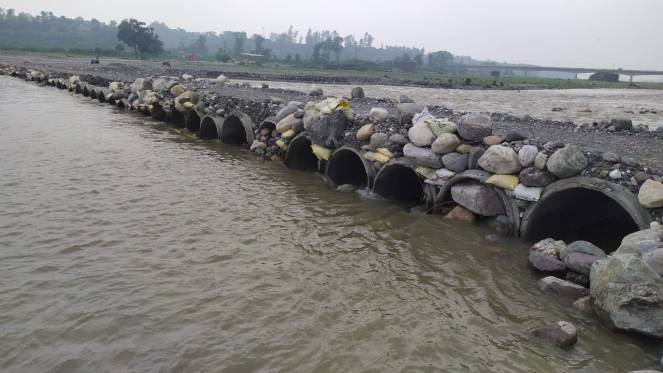
Following lockdown restrictions in March, there was a halt in mining activities. However, mining activities were resumed in April.
Local people of Vikas Nagar tehsil in Dehradun have shared revealing and disturbing images and videos of riverbed mining activities in Yamuna river over past couple of months. Though in wake of ongoing monsoon the mechanised extraction of riverbed minerals (RBMs) has seen a halt since July 01, 2020, the miners have left an illegally made makeshift bridge on Yamuna river. And that’s cause of worry for local people.
“Since May we have been requesting local administration not to allow deep, in-stream and mechanised mining in Yamuna river compromising rivers flow as it could change river course and create damages during floods. But all our pleas fell on deaf ears”, said a local villager on the condition of anonymity.
He also said that, a causeway bridge built across river in the last week of May 2020 to transport the minerals has been left unattended which could lead to a flood disaster if not safely removed immediately.
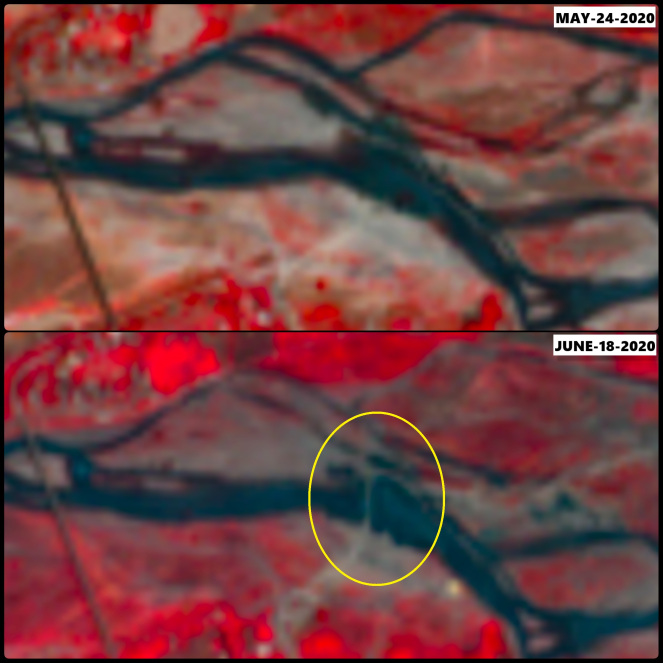
Pandemic failed brazen mining activities
Following lockdown restrictions in March, there was a halt in mining activities. However, providing relaxation in April, the government allowed mining activities to resume claiming that lockdown restriction has affected livelihood of labourers.
However labourers in large numbers had left the mining areas by then. Most of them objected to resumption of mining fearing spread of infection, citing impossibility of social distancing during mining. The government silently permitted heavy machinery to invade the riverbeds all over the state, inviting rebuke from High Court of Nainital in the first week of June 2020.
Despite monsoon mining period extended twice
Meanwhile, the official riverbed mining period ended on May 31 in Uttarakhand. But in a desperate attempt to continue mining, the state govt reportedly pleaded to union environment ministry (MoEF) to extend mining permission up to June 30.
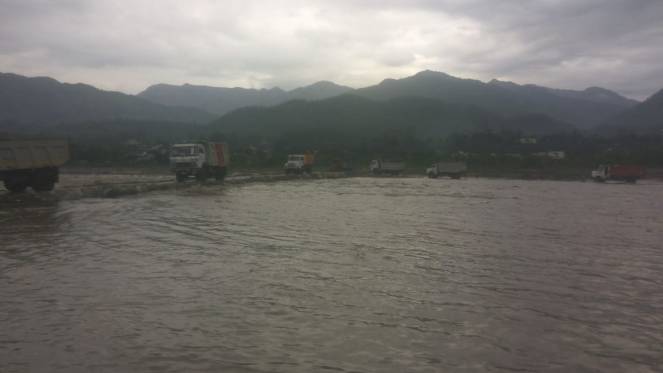
Responding favourably and swiftly, the MoEF on June 04, extended the miming permission for a month claiming it to be one time relaxation. This is when in order to make up for the lockdown losses, the miners unleashed brazen mining activities all through the state forcing people to protest against mechanised and unsustainable riverbed mining damaging roads, riverbank farms and other adjoining properties.
“Seeing the mining department apathy, we all were praying for monsoon rains as soon as possible as the only way left for the miners to stop onslaught on our river,” said another local from Vikas Nagar.
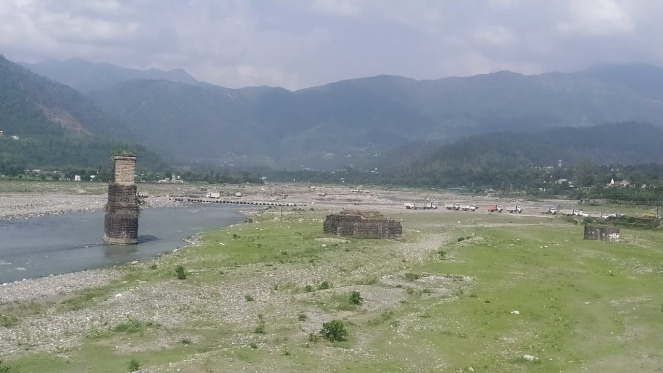
But when the one month extension expired on June 30, the state government again extended it to July 31 by issuing a notification allowing them to continue collection and transportation of minerals for full one more month in the name of ambiguous and unscientific river training policy.
Deep pits formed in Yamuna riverbed
Given the rainfall so far, there is apparently no possibility of riverbed excavation, however the mining scars in terms of deep pits left on Yamuna riverbed are all visible showing how sustainable the mining operations have been.
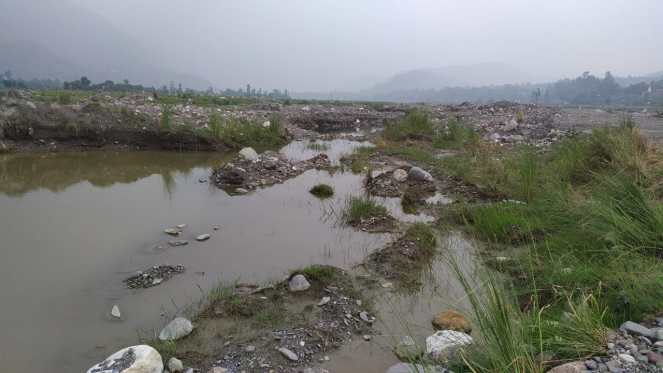
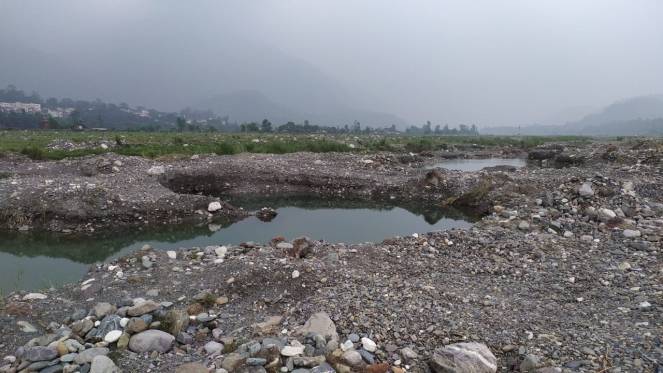

“Minerals being mined from the river bed are non-replenishable materials that belong to the river, this sand and stone play extremely critical role in stabilising the boundaries of the river banks. These deep excavation being permitted for mining is especially harmful for the river bed and severely damages the river course. The temporary pondages being created are disaster hot spots and can rein havoc in the coming monsoons, by restricting the flow of the river. These environmental hazards have been kept at bay and no lessons have been learnt from the past disasters. A detailed replenish-able material study is needed before allowing mining leases/ permissions in the state”, explains Mallika Bhanot, member Ganga Ahvaan, a group working towards free flowing river Ganga in Uttarakhand.
Illegal bridge turning into imminent flood disaster

Haripur area is located at the foothill of Shivalik. Leaving the narrow valley behind Yamuna river here expands into a vast floodplain stretch forming several braided channels. At this location, big tributaries like Tons and several seasonal and perennial streams join the river further enhancing its discharge volumes during floods.
Local people remember that their elderly often mentioned the ancient Haripur town then more prosperous than Haridwar, being wiped away by extreme floods. In fact, remains of a British era bridge still stands close to the illegal makeshift bridge as a testimony to possible flood destruction in the past.
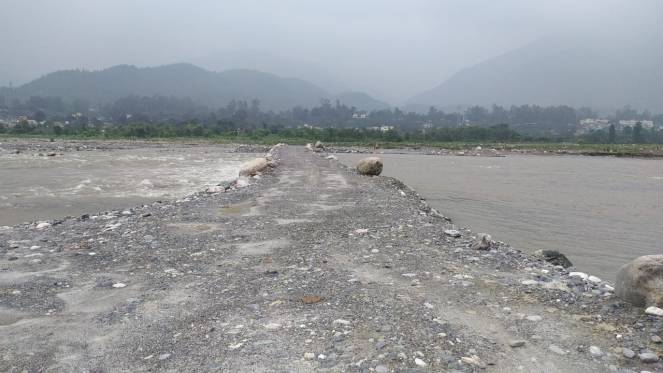
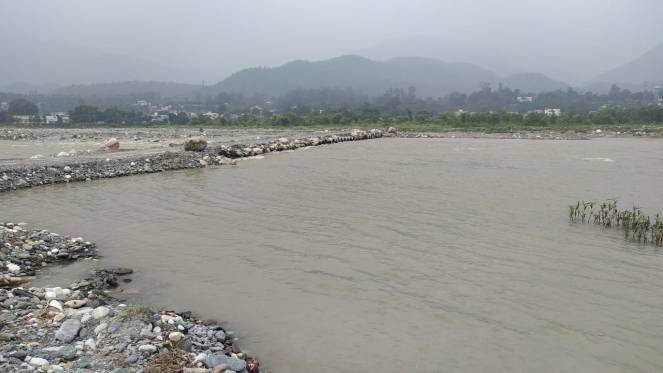

Interestingly mining of river minerals at Haripur were approved in name of addressing potential flood threats by channelising river. However, now the illegal makeshift bridge has obstructed flows and presenting a flood threat in downstream areas. Similarly, the deep mining pits are bound to alter the river course during floods.
The Kalsi Bridge is hardly 500 metres away from the illegally built causeway and the Dak Pathar barrage is another 4 km downstream. A flash flood spell which is very much possible any time, would wash away the makeshift bridge and affect the road bridge and barrage. In addition, farmlands adjoining river could face erosion.
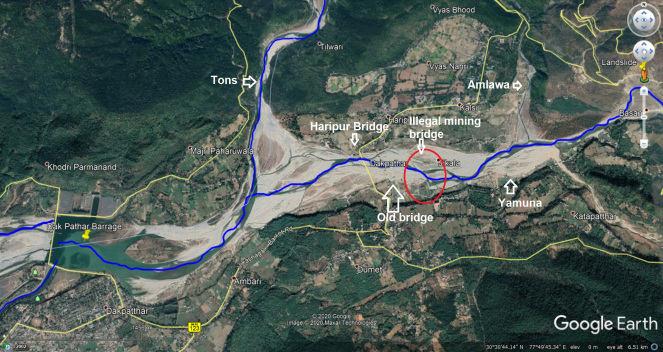
“River bed material, be it boulders, gravel, sand or silt are an essential part of river sub strata that determines on one hand the floral and faunal richness of a river stretch but also it’s fundamental architecture in terms of depth, width and form”, explained Manoj Misra, convenor, Yamuna Jiye Abhiyan.
He also cautioned that when humans try to interfere through boulder, gravel or sand mining it strikes at the vitals of a river system and invites unruly and devastating floods and damage to infrastructure like bridges, barrages etc.
Govt in deep slumber
Local people and concerned have informed all the senior officials of mining department and pollution control board including the District Magistrate-Dehradun and Sub-Divisional Magistrate-Vikas Nagar. No action has been taken so far indicating deep reluctance prevalent in state administration.
“The problem is not just the mining but the sheer negligence of mining department and administration which have been turning a deaf ear to public concerns being repeatedly raised before them”, says Ayush Joshi, an environmental engineer who has been raising the issue of unsustainable mining for long.
“Excessive riverbed mining have become a big threat for the rivers. In past two months Yamuna, Ganga, Tons, Aasan and other rivers have faced sudden increase in mining. I have seen hundreds of trucks ferrying river minerals from Aasan”, adds Joshi. He also says that the mining activities are being mainly conducted in Shivalik foothills which is proven groundwater recharge area. Mining in this tarai zone should not be allowed without a scientific study.

SANDRP has been raising the issue of unsustainable mining activities in Yamuna during and after lockdown relaxation. In its overview of riverbed mining activities in Uttarakhand, it has found that the state govt has been doing away with every principle of sustainable mining practices. If the govt fails to act now, only this potential manmade flood disaster could possibly wake the govt up.
The first and foremost thing, the govt must do is to direct the miner to safely dismantle the illegal mining bridge in Haripur. An independent probe must be instituted into the unsustainable mining activities. Those responsible for illegal mining should be held accountable. Lastly it must not allow any mining activities without scientific district survey reports and credible replenishment studies. The unsustainable, illegal RBMs excavations are going to turn into full blown but avoidable disasters for rivers and people.
This article is sourced from SANDRP. Views are personal. Read the original story here.

